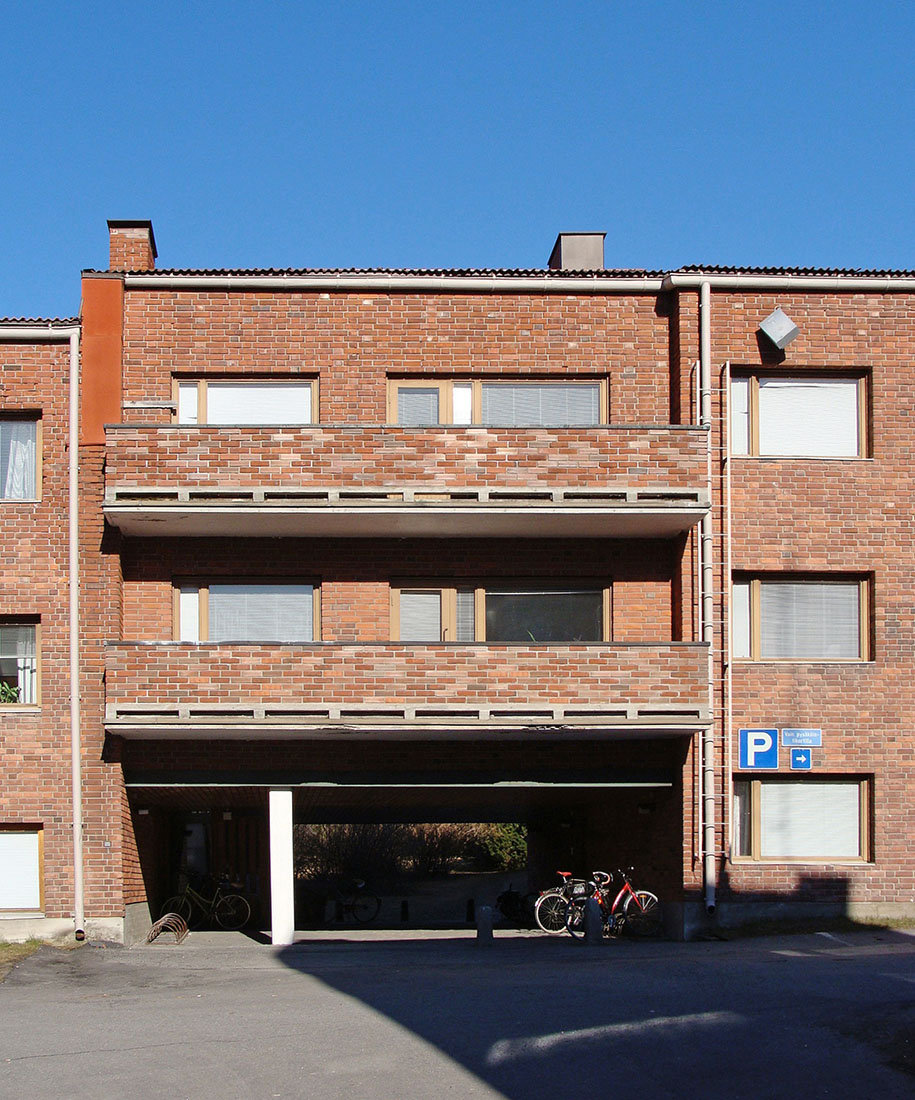 |
 |
 |
 |


Student Dormitory Naatti
Seminaarinkatu 15, Jyväskylä
1952 - 1953
In 1950 Alvar Aalto took part in the general planning competition for the Jyväskylä Institute of Pedagogics. His proposal 'Urbs' was awarded the first prize at the end of May 1951, and the achitect was immediately commissioned to begin working on the plans of the various buildings. His proposal, reminiscent of some of his earlier projects, consists of several individual buildings, which are arranged in a U-shape, respecting the existing buildings of the complex. The central space, which is framed by the complex, is accessible only for pedestrians. Located in a ridge of pine trees close to the centre of the town, Alvar Aalto designed another piece of architecture in tense relation to the surrounding nature. Construction of the complex started in 1953, and within three years a major part of the complex was concluded, even if Alvar Aalto worked for several further years to design various buildings and additions. All buildings of the Jyväskylä Institute of Pedagogics expose Alvar Aalto's emphasis on materiality, combining white walls with wood, brick and glass. The whole complex contains buildings for various functions and was initially built for teacher training. In 1966 the college of education became a university.
The Naatti Student Dormitory occupies a site on the rear side of the main building, aligned with the Lozzy and Lyhty refectory buildings. The elongated volume leads down from the ceremonial field. The student dormitory was completed in 1953, but due to a lack of furniture, it was taken into service only in summer 1954. Its name was derived from the finnish word 'internaatti' (boarding school). Originally the dormitory was divided into male and female sections, containing 80 two-person rooms, accomodating a total of 160 students, equally divided between the two sections. All rooms were arranged on both sides of the long and straight corridors. Consequently the rooms, all of a similar rectangular plan and approximately 15 square meters, look either south-east or north-west. The men's dormitory was found on the upper part of the slope. The volume is mainly three storeys high with a simple rectangular plan. The exterior appearance is marked by the red brick facades and the regularly placed window openings with deep reveals. The elevation facing the lakeside is enlivend by the protrusions of the balconies. The student dormitory was transformed into a language teaching facility in 1974, so that the interior of the building is heavily changed.